Since giving a fond farewell to the ‘Static’ series in 2014, Josh Stewart has been devoted to his esteemed distribution company, Theories of Atlantis. Operating out of his apartment in Williamsburg, Brooklyn – the lack of a full length monkey (and camera bag) on his back has allowed Josh more time to focus on the Theories brand itself.
Having been fairly quiet since embarking on his ‘Static’ sabbatical, I caught up with Josh to learn about life post-Static IV, separating Theories distribution from the brand, designing graphics, The TOA Times and more.
As of this month, Theories has been showcasing the East Coast, and other unsung aspects of skateboarding, for a decade. With that in mind, and as this interview had to be condensed when first published, it seemed like a fitting time to broadcast the original uncut transcription of an hour well spent on the phone to one of New York’s finest filmmakers.

What was the first thing that crossed your mind when you finished Static IV?
The thing is, there is never a specific moment that you feel like it is finished. Maybe once you get the hard copies back… You always think there is something you can change. I kept changing almost every version for each premiere – adding or taking something out. It was definitely a relief but then you have that thing, I don’t know what you call it, I think there’s a term for it where it’s almost like your kid has died. Where you lose all your sense of purpose in the world to a certain degree. I wasn’t trying to be dramatic like: “This is the last one ever,” but it’s just the reality of being able to commit the amount of time it takes to film a video, still be able to run the business here and for my body to be able to handle it, you know? I used to live in Florida and I would travel to film videos but you were always in a car. In New York it’s different, London is very similar, everything is on foot and we would spend ten hours a day filming and walking fifteen miles through the city. At a certain point your body can only take so much.
Especially when you have done it for the other Static videos and also contributed to other videos during that timeframe.
It’s tough because I can’t really see as much value or I don’t get as much satisfaction out of doing anything that isn’t a full length project. I don’t really like the short edits which is the new model. But a big massive project that takes years to finish is a bad use of resources, you know? Hopefully Static had a little bit longer but I feel like full length videos nowadays have just as long a shelf life as a decent online edit. Maybe two weeks people will talk about it and then it’s done. You commit so many years of your life to it and there is something new replacing it a few days after it comes out. It’s really tough to commit that kind of time for it to be worth it. It’s smart for kids or a newer film maker. I think that you have to do that to show that you’re capable of capturing people’s imagination for a long amount of time but for companies, it’s really debatable if it’s worth it to do a thirty-five minute full length video now.
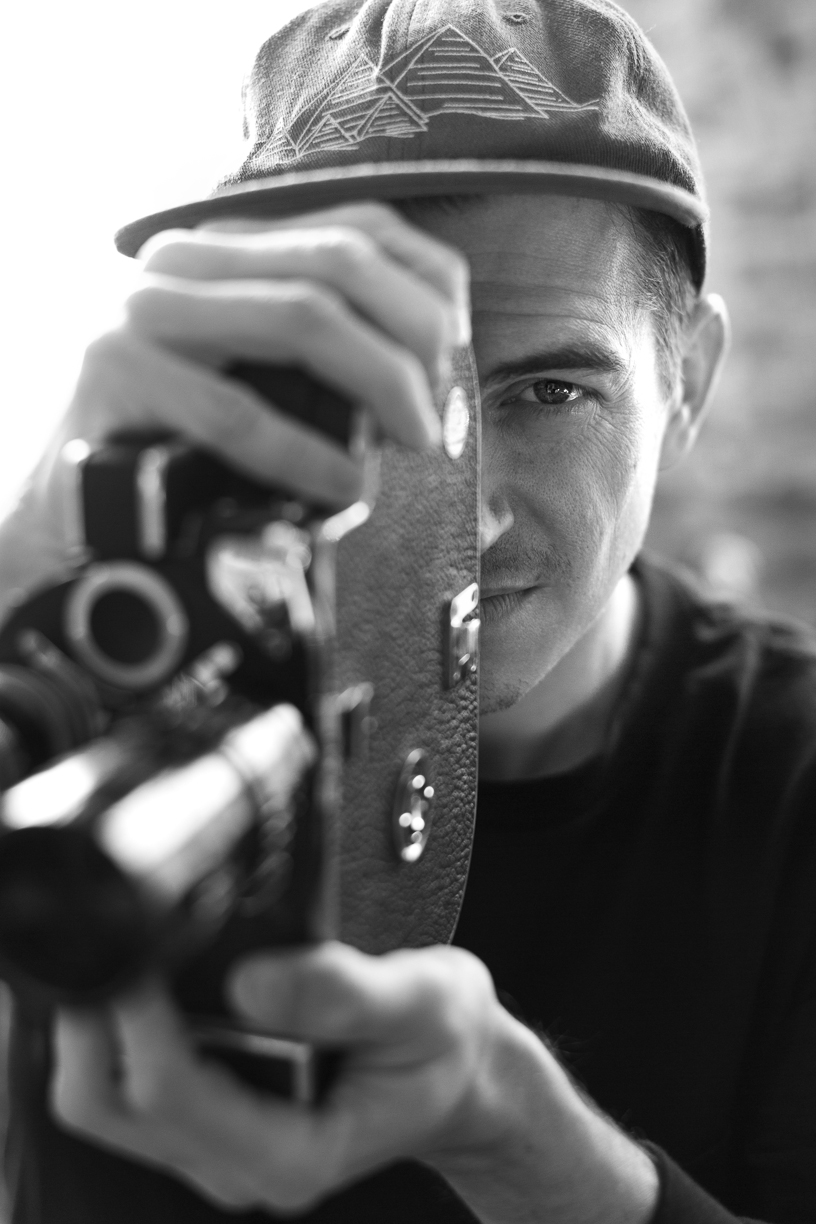
“It was less like I had lost all meaning in my life. Because that’s how every other video would be and that’s not unique to me by any means.”
Jacob Harris mentioned to me that filming a video of the length he did for Isle [Vase, 2015] feels like you’re hanging around in the part. Would you say that applies?
Yeah, it’s true. There are a few guys who can do these shorter form pieces. Peter [Sidlauskas] with the Bronze videos is good at it – a short project while creating a different world and pulling people in. But in order to really have an emotional effect over people you need more than a four minute edit. Dan Magee was really good at that too and it would be weird to see him nowadays having to do edits that are on the Thrasher site and literally two hours later you click on and it’s seven posts down, lost in the mix. It’s disheartening.
How did it feel surprising everyone with Static V at the first premieres?
It was funny because it was a secret for a really long time. Literally nobody in the video knew about it and then I started second guessing the decision a month or so before. I started bouncing the idea off of a few people so I was worried more had found out about it. You tell one person and it’s not a secret anymore. But at the New York premiere, especially, it was awesome. I’m not saying that I’m jaded to the premiere experience but having done so many different videos and premieres… That is still the best feeling ever for me but it’s not as powerful as it was. I had the fun of experiencing the premiere and gauging people’s reactions then knowing the whole time that there was a surprise.
I was worried people would think it’s really corny but everybody seemed really surprised. Brian Clarke had his dad, mom and brother there. I walked passed him and his part wasn’t in the first one and he’s like: “Josh, is this for real? I do have a part! I got my parents to come out here and then didn’t even have a part in the video! I was tripping.” It was a fun way to squeeze out a bit more of a new feeling from that experience.
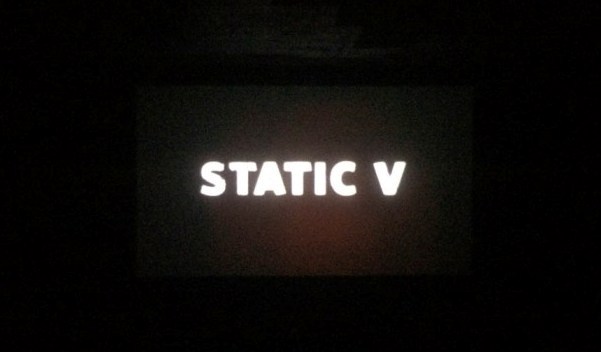
“When Working on the video I was constantly thinking ‘I need a rest.’ I’d love it when it rained. Holy shit! A rainy day was the best to get a break.”
Static IV will have been an introduction to the series for plenty of skateboarders. I’m twenty, and my older friends are fans of the other videos, but IV was the first I saw. Is it odd to consider that you’ve played a huge part in exposing East Coast skateboarding to a younger generation?
It’s weird because Pat Steiner works at Theories of Atlantis so I bounce a lot of ideas off him and he kept trying to remind me of that, like: “Static III was seven years ago, that’s a really long time.” Your age group is a perfect example as you’re fully engaged and aware of the whole scene now at the age of twenty. But if you’re like thirteen or fourteen you probably aren’t aware of more than just the most popular companies.
I started skating in ’89 and feel when Eastern Exposure 3 came out [1996, Dan Wolfe] – that’s a specific era where skating in a city and real street skating, you don’t have to be in a city to call it real street skating but you know what I mean – that vibe, East Coast skateboarding really clicked for me. Essentially I’m recreating that feeling those videos gave me. It’s tricky because I want to be doing something original but something that carries across that same feeling to skaters and guys that aren’t familiar with it yet. It’s a tough balance of trying not to repeat myself, to have some kind of new twist to it. There is stuff I would go out of my way to not do because I’m afraid it looks too repetitive, cliché or the vast majority of skaters wouldn’t even notice.
A good example is Aaron Herrington, his second song [Inna Citi Life, Group Home] was the song I put his footage to when I sent it to Pontus [Alv] trying to get him on Polar. I was like, “Don’t worry, I’ll never use this song.” It’s such a cliché 90s hip-hop song but those dudes and Aaron said: “I really like this song, I think it’s sick. It’s not too played out.” So, coming from a different era or generation you have a different perspective.

Having spent the best part of fifteen years working on the Static videos did you feel that it left a void in your life after finishing Static IV? Do you miss the routine of working on it?
That feeling was much worse with past videos to be honest. It was a definitely a relief but the fact I have Theories of Atlantis distribution and Theories stuff going on helped fill the void because I was trying to do both of those. Once Static was finished it allowed me to handle the distribution with the amount of attention it deserved. Also, I hurt my back pretty badly, near the end of Static IV, so there was a year afterwards where I was only filming twice a month. The thing I missed the most is just being out in the city at night creeping around looking for spots with Jahmal [Williams] and Steve [Brandi]. It was less like I had lost all meaning in my life. [Laughing], because that’s how every other video would be and that’s not unique to me by any means. It seems like that for every dude who really invests themselves – you literally have depression for a while after it’s finished.
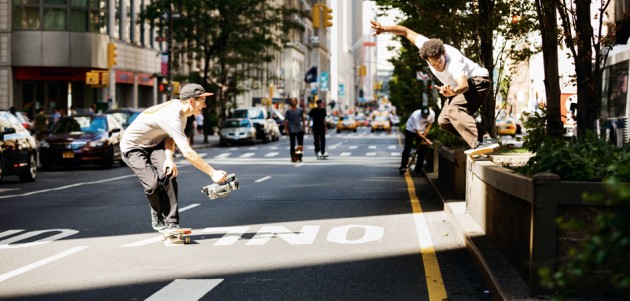
“I feel at a certain point it’s better to end something with dignity instead of milk it. People have said: “You should do Static Skateboards,” but I feel that turns it into something it wasn’t meant to be.”
How big is the difference in your day to day life back when you were filming for Static and now that Theories of Atlantis is your main priority?
It’s weird. I guess it was a seven year period between the two but some of the guys were supposed to be in Static III [2007]. It was already too long of a project so I told them that we’re going to push them to a future video and we didn’t work on it for a while. I was still filming but working on the MIA video [Welcome to MIA, 2010].
Realistically, there’s probably four years where we were filming all the time and a little bit of that happened during Static III. The last few years of working on Static IV I was working at Theories all day and trying to buy time. Constantly: “Oh yeah I’ll be there in half an hour!” Then disappointing everybody, finally getting out at six and I would film until one, two, three in morning.
I had a restaurant job for a while so I would work then meet up with Aaron [Herrington] or whoever at night. When working on the video I was constantly thinking ‘I need a rest.’ I’d love it when rained. Holy shit! A rainy day was the best to get a break. Now I’m sitting at a desk, my hips and back are always killing me because they’re not used to this lifestyle and I’m thinking about being out filming. It has flip-flopped essentially.
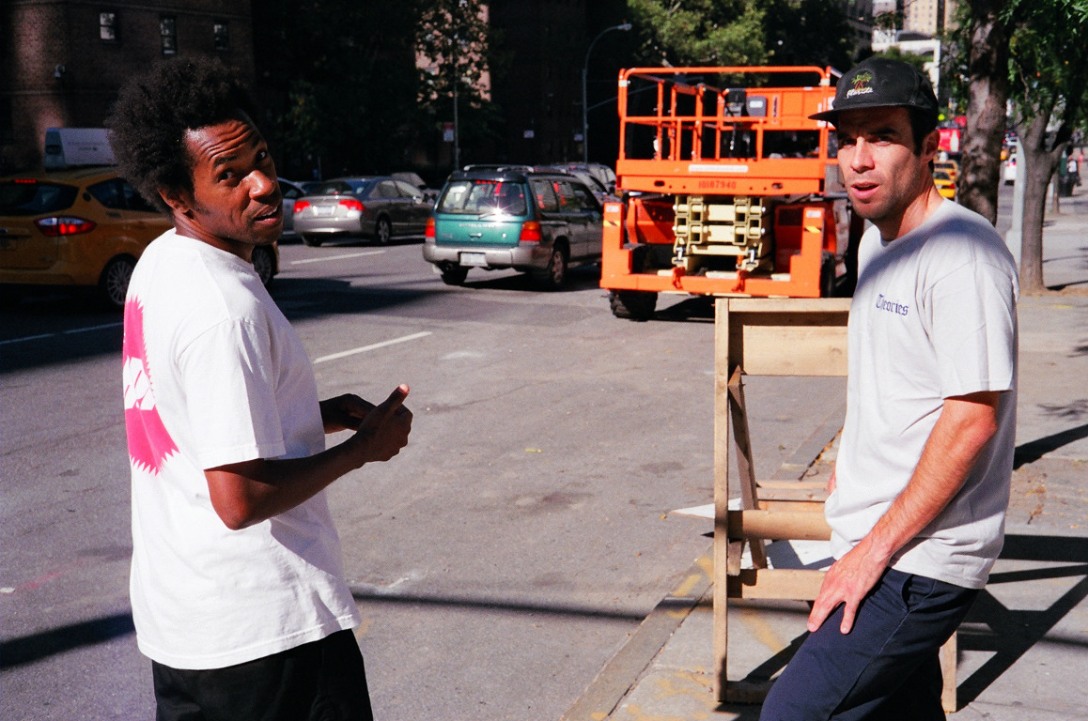
Was it a conscious decision to focus more on Theories following the video or did it happen naturally?
I was worried people would think that Static IV was a marketing tool whereas the other videos came from purely ‘I want to make a skate video’ and picking guys who nobody really saw anything of. Static IV was the same thing and we started working on Static IV before TOA distribution even existed.
Then it just started happening that I’m skating with Jahmal so a naturally a couple of Hopps dudes are with us like Dustin Eggling and Brian Clarke. They would end up getting more footage so it’s like: ‘I’ve got a minute of footage of this dude and here’s another dude people don’t know anything about so I’ll add him in.’ It became an organic thing where all the dudes in the video happened to be related to the different brands. Not all of them, Quim [Cardona] isn’t related to any but he’s one of my favourite skaters ever so I was willing to put as much energy into working with him as possible.
The only time I’ve finished a video then immediately started another is the Adio video [One Step Beyond, 2002] because it felt so big budget that I had this burning desire to do something that was more street skating based and East Coast. Usually there’s a good year between where you need to have a normal life again and feel like a human being.
It wasn’t planned, I had been focused Theories as much as possible while working on the video and I am working on some other stuff. But the whole working on a video for years, travelling the world thing, I just simply can’t invest that kind of time. I could do another Static video and have a lot of guys help me film it but I feel at a certain point it’s better to end something with dignity instead of milk it. People have been said: “You should do Static Skateboards,” but I feel that turns it into something it wasn’t meant to be. I have said it’s the last one but who knows. In six months I might get really sparked and have an idea but I don’t know if I could pull it off again the right way.
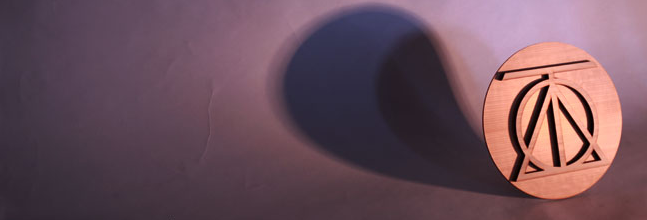
Is it difficult separating Theories as a brand from the distribution?
It wasn’t thought through well, [laughs]. Theories of Atlantis was my website so I started doing Theories t-shirts because nobody wants to say the full ‘Theories of Atlantis’. It’s too many syllables. When I started trying to name the distribution it just made sense to carry on and call the distribution what the website was because the website is how it all started. At that point we had already done several Theories shirts and the whole thing is based around my obsession with alternate theories on the beginnings of civilisation and conspiracies. There is so much great imagery surrounding it that would not only be a cool graphic but an amazing story if somebody cares to look deeper. We probably should have come up with a separate name so that it could live separately. Our intention is for the Theories brand to be separate to Theories of Atlantis but for obvious reasons people associate the two as being the same thing.
“We probably should have come up with a separate name so that it could live separately. Our intention is for the Theories Brand to be separate to Theories of Atlantis but for obvious reasons people associate the two as being the same thing.”
What does your process behind putting the graphics together entail? Do you have any artists that you work with?
Up until about two years ago it was all me and I’m far from a graphic artist. I have a really amateur grasp of Illustrator so I ended up hiring Pat Stiener on board and Pat does the majority of the graphics. It’s basically just Pat and myself at this point. The thing that has been tricky is we’ve spent so much time trying to take care of our other brands and handle their distribution well so Theories has always been the last thing we deal with. This past year, since Static was finished, we’ve been trying to put a lot more time into Theories.
It’s tough, there’s no process, [laughs]. We’re friends with the guys at RIPNDIP and go to their offices and they have their ideas and graphics all pinned to a mood board and laser printer print outs of all their designs. We have a black and white printer I got for free when I was twenty years old – we’re far from professional at all at this.
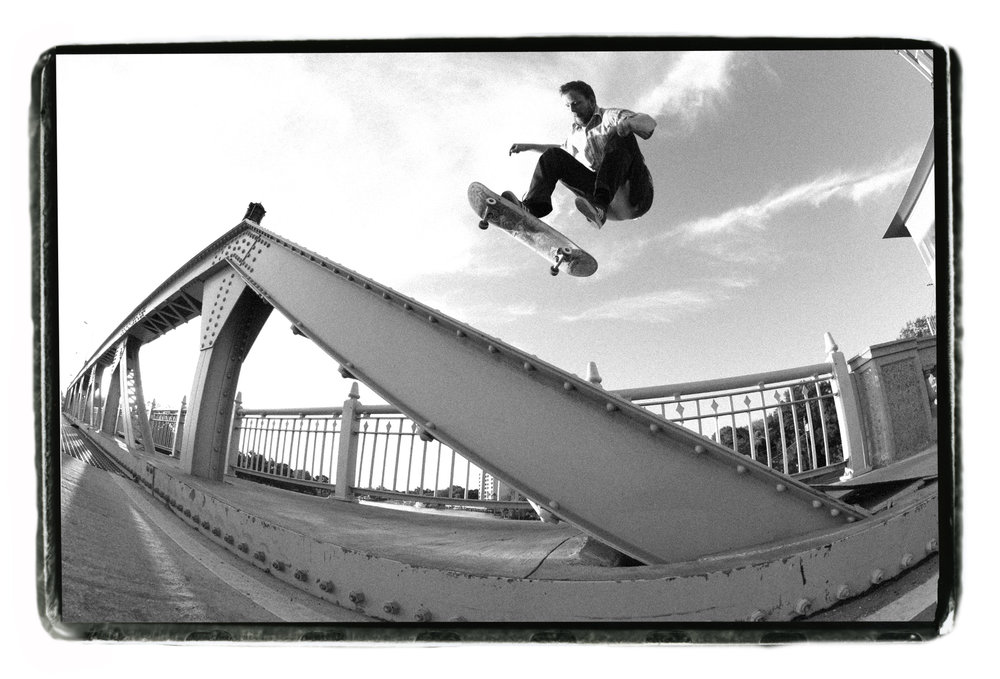
Through that few-month period of developing a new line I’m always reading. Some idea will pop out of that and Pat will come up with something. I feel his taste lends more to pop culture that he can twist into a Theories related idea. A good example, there’s ‘The Magic Bullet Theory’ based around the JFK assassination. It hit him that there’s a Washington DC basketball team that used to be called The Bullets and most people on the East Coast know their old logo so he manipulated that to read ‘The Magic Bullets’.
I can be reading about the pyramids or UFOs and have a strange idea. The other day somebody said in our office the words “fifty one” and it popped in my head there is the old famous night club in New York; Studio 54. It made me think that it would be so sick if you made the Studio 54 logo into Area 51. Then Pat starts messing around and mocks up a graphic. [Laughs], so many of our graphics, most people probably have no idea what it means but hopefully to some it looks cool and they look into it further and find the story behind it.
As a lot of Theories imagery initially comes from other sources, and as it is quite a popular theme for companies at the moment, what’s your opinion on the use of appropriated imagery for skateboard graphics?
I was a lot more judgemental of graphics before we started needing to create a new season every few months. We were so new to it that we were overdoing it, producing all these new ideas, only using them for one season then having to create new graphics. You realise half the world didn’t even see that graphic so you try to come up with a different colourway or whatever.
There are a lot of lazy graphics out there where it’s just a stolen logo or image. Some of the most successful brands do that, or just put the name of their brand really big at the bottom, and it sells like crazy, [laughs].
It’s weird because you see so many of these obvious influences and it’s the same thing with apparel too. You don’t even realise you’re influenced by this stuff and then if you step back all of this does look the same. If you look at those history of skateboard graphics books it has consistently been appropriating pop culture imagery but done in really creative, provocative and smart ways and it has done in really lazy ways too. I think what’s rad about what has happened in the last five years is these new brands have offered a lot and it lit a fire under the ass of the brands that got lazy. Not to say all these new brands have super original graphics but I think Polar has done a good job of producing a wide array of different kinds of graphic concepts and Isle’s approach has been really fresh. It’s definitely an exciting time.
How do you go about choosing certain conspiracy theories or figures from history to base graphics on?
Something that has a good story behind it. We rarely hear comments, so I don’t know how much people actually care, but I want to have a graphic where I can write a story in the description on our web store. I’ve been into this stuff as long as I’ve been into skateboarding so it’s an excuse to put that weird knowledge to use, [laughs]. If somebody cares to look further, I hope that can separate us from other brands that just put something random on a t-shirt because it looks cool. We have this hat that has the little embroidered Solway Space Man on it and it has no story behind it from most people’s perspective. It is pretty easy to debunk that, but it is just a rad story. It became a national story and was in the era of when space themed movies were really big.
In spring we have a Twin Towers sock we’re putting out. I think if you looked at them you wouldn’t notice what it is but then how many people are going to want to wear socks with the Twin Towers on it? I have no idea but it creates a conversation. You might not agree with the theories and ideas I have, or that the graphic is representing, but it opens that discussion. I worked in a restaurant as a bus boy for the first few years we had Theories going and wore that Lee Harvey Oswald shirt. Elderly people would stop me and say: “Can I ask why in the world you would want to wear a t-shirt with an assassin’s face all over it?” It made me feel weird but I would say: “That’s the purpose, because now we’re talking about it.”
I’m not a painter or an illustrator; I can’t sit down and draw an amazing graphic. So, if I’m coming up with new ways to present these ideas, express that through a graphic or do something that grabs somebody in the same way I feel if I can do something that has some depth to it.
Is it a concern that by exploring these ideas that you might offend people?
Oh yeah, for sure. I know it will. Obviously in skateboarding that has never been something people worry about, it’s kind of good to. Again, you open up a discussion because nobody wants to be preached to. A customer emailed in saying we should do a Building 7 shirt so we did that baseball shirt and instead of a name on the back it just said “building” and the number seven. That was a really obscure shirt and if anybody looks into the story behind Building 7 and the whole 9/11 story I feel that that little bit will peak their interest into looking more because that opens the door to like: “What the fuck?” Because it’s such a crazy thing that happened and by the vast majority of mainstream media it was not covered. Not many people know about that and you learn about that piece of the story but it’s a nonabrasive way to introduce somebody into the story as well.

So, being more thought provoking rather than outright provocative or controversial I guess?
With skateboarding being so popular now and a lot of kids getting into skating for the wrong reasons; for the idea of competition, being like Rob Dyrdek and getting rich, there are very different mind-sets involved in skating. Hopefully the Theories stuff will peak the interest of someone who feels we’re not insulting their intelligence by putting a naked girl on a board or a weed graphic.
I’m so tired of that. The thing that got me interested in skateboarding is it promoted, allowed and celebrated you being different and it didn’t criticise you for that. Essentially the antithesis of the jock mentality, trying to ‘fit in’ and being close minded. The thing that bums me out is most graphics in skateboarding are weed graphics and there’s videos where people are slamming beers while they’re skating handrails. This whole jock mentality has been welcomed in and celebrated because it’s so easy to sell. But hopefully our stuff can be appreciated by an audience that feels we’re not taking that route.
What initially sparked your interest into conspiracy theories?
I started skating in ’89. My brother was sponsored and friends with all the guys in Florida. A couple of them rode for Alien Workshop and would be hanging out at my house – I was ten years old with Bo Turner and Scott Conklin. The artist behind Workshop, Mike Hill, and those guys were reading this book called Behold A Pale Horse [Milton William Cooper, 1991] so I learned about that through those guys and eventually started reading that book. So, it was Alien Workshop and those guys – I’m not going to say “opened my eyes to the reality”, but they got me interested and it snowballed after that, [laughs].
“This whole jock mentality has been welcomed in and celebrated because it’s so easy to sell. But hopefully our stuff can be appreciated by an audience that feels we’re not taking that route.”
You’ve made limited runs of boards so I’m guessing the thought of turning Theories into a proper hard goods company has crossed your mind?
Yeah, but there are obstacles to that. Literally for three years we’ve debated it in the office and there are too many brands out there competing for the wall space, I don’t want to add to it and pollute the industry. I felt that we could easily do it but don’t feel I could put the right energy into it. We’re too distracted and if we’re going to do a board brand it needs to be done right. The other aspect of it is, as a video maker, I’ll meet a skater, see footage or get stoked on some skaters and eventually that is how a video comes together.
Then there’s a dude like Quim where I hadn’t seen anything new of him in a while. I see him still skating so well and his style is so ill. I’m like ‘this dude needs to have a part,’ then those younger kids I’ll find out about, I’ll help plug them into one of the brands we represent and then I kind of get bummed because it’s always in the back of my mind.
“There are too many brands out there competing for the wall space. I don’t want to add to it and pollute the industry.”
Was Aaron and Polar that kind of situation?
For sure but I think that was too perfect of a scenario. I never regretted that at all. It’s tough because there are some other dudes I’ve been friends, or filming, with for over a decade who it would just make sense that if we started a brand they should be on it, but they’re on other teams.
How do you find the process of creating products for Theories? Polar and Magenta are very detail orientated when it comes to producing soft goods, do you feel that you have taken inspiration from what you have witnessed about their development to help build Theories as brand?
Yeah, absolutely. If I’m going to do something I want it to be something I would ride or wear. At first it was just finding stuff Pat or I liked. I’m not going to say by any means that we started this trend, because it was well on its way but, when we started helping Polar in the United States, Pontus and I were talking and I kept pulling down the hats that I always wear which are just those unstructured hats with a snapback you would buy at a gas station. At that time every hat in skate shops was that boxy streetwear fit with a big crest or a five panel.
Pontus was already making samples so the first company that we were making custom hats with, that’s what we were doing. It took some failures to figure out that, to specify, the terms and names we had to use and now it is every hat. That’s what it comes down to, we make what we would want to wear but now there are so many brands using the same sources it has become us running from what’s popular. We do stuff until we start seeing it in a bunch of shops, and I’m not saying people are copying us, it just starts happening.
I want to make stuff that is still within reasonable price for a skater. We have a friend who has a factory in New Jersey and it’s really expensive but it’s rad because we’re involved so we’re trying to do one custom piece through him a season. If you want to do it in America cut and sew stuff will always be expensive but we try and keep the basic Theories line reasonable and affordable. As it goes on you learn more about each process and realise other things are possible so it gets to be more fun.
I guess my point is that we’re not trying to be some exclusive ‘high end’ brand but at least have something different. We will find something and like it, get orders for it, place the orders and by the time it finally ships to shops there are three other brands who used that same source and we’re like: “Damn it! We were so close to having something unique!” [Laughs].
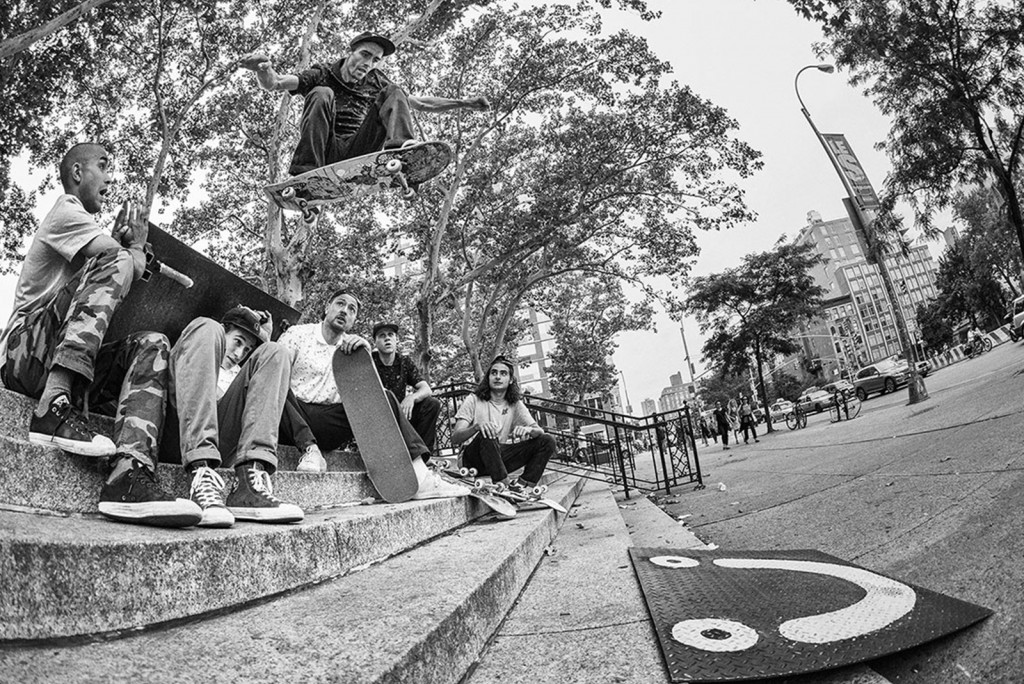
“I think what’s rad about what has happened in the last five years is these new brands have offered a lot and it lit a fire under the ass of the brands that got lazy.”
What’s your stance on the crews that have popped up and expanded into clothing companies to an extent? Bronze and Dime are the main ones that spring to mind.
It’s a little bit frustrating when there are so many things out there but I feel like if there is anybody that deserves to have some kind of success, and who should be doing that, it is the guys that create the culture. I’m not saying that just because I’m a video maker but when it’s done well like Bronze – Peter [Sidlauskas] creates a really original experience with his videos.
It’s totally justified that those guys should be, I don’t want to say taking advantage, but the stuff they make just carries on that vibe. It’s great that there is a way for them to reach an audience beyond just their videos. Lord knows these guys aren’t going to make a living off making skate videos so being able to sell products that tie into it is rad and deserved. Obviously Bronze and Dime didn’t get into it for money, it has just been fortunate that it turned into something also kind of profitable.
Are there any places where the amount of support for Theories has been surprising? I imagine there would be somewhat of a demand for it in Florida because people are aware of your roots there.
I’m originally from Tampa and the Skatepark of Tampa were slow to start supporting Theories until they got a new buyer and it does really well for us there. But the Skatepark of Tampa is a huge website so it’s hard to know if it’s locals who are supporting it or if it’s the web store. The UK, Japan, Florida and the North East all seem to support Theories the most. Japan has always been supportive of East Coast skateboarding so that isn’t surprising. It’s rad that there is a lot of support in the UK because I doubt it has anything to do with my involvement with UK skating. I’ve done a lot in the past because I was such a fan of the London skate scene but I feel it’s kind of random.
Where did the idea to start publishing The TOA Times come from? I think it’s really surprising that the newspaper format hasn’t been explored too much with skateboarding media.
Originally we thought we should do our own magazine. There isn’t really a recurring East Coast magazine. I started talking about doing it in different formats and that it would be rad to put it out as a newspaper and then another season as a small booklet. Keep it different and add variety to it. Finally, Pat started messing around and got a first issue out there.
I think it’s just anything new, you know? The magazine format, we’ve been looking at it forever and it’s so overwhelming. It’s nice to have something that feels a little light. I was stoked, originally it was just going to be in black and white and they were able to do it in colour but it doubled the price, [laughs]. We’re trying to fix that.
The touches of satire in the first issue were really good. Like the bucket hat obituary and Pontus being pardoned by Barack Obama for wearing fingerless gloves. How have you found the experience of working on the publishing side of things?
I’m not going to say I’m a good writer but I’ve written for skate publications in the past. I used to shoot photos as well so I’ve shot articles and would write stories so I really like writing if I have something to write about. That part is fun, it’s when you have a project where you have to come up with stuff. It’s not frustrating but it’s the same as designing Theories graphics – a few ideas come to you that you’re stoked on but it’s not enough so you have to force it. It’s the same thing with skaters having to film when they don’t want to, always better when it just comes naturally.
How do you feel about the way that the internet and recession of print skateboard media has affected the quality of written content on offer?
It’s tricky because, as with everything for the past five to seven years, certain things become stagnant. Companies becoming lazy or too dependent on corporate money so you have magazines with US Army ads in them… It was only natural that there was going to be a backlash. The backlash we saw was independent printing started happening. Something as beautifully done as Dank sells for fifteen dollars out of Norway. Ten years ago if you said that we’re selling a hundred to a hundred and fifty copies of that in the US people would have laughed at you.
All of us are hungry for something that has more meaning behind it and I think when you have that independence with somebody it is their personal project; new, exciting and they’re enjoying the whole process instead of having to force something out. It slowly became, I don’t want to say successful because I doubt the Dank guys are making money off of it, but it was well received. That is exciting but just like everything it has become a trend, [laughs]. People jumping on the band wagon because it has already been proven so the quality might not be as good here or there. Three years ago it was really unique but now it has gotten a little saturated so it gets to where it’s almost like board brands so you become a little more specific and choose ones that are done well.
Actually, it doesn’t matter if it’s done well. It’s the same with skate videos, some of the best are done really poorly as far as quality but if there is an original message or idea behind it and the person is super passionate you can tell and it comes out. It just takes the right person that is passionate enough or has a weird or unique approach, the Jacob Ovgren Puff Magazine is very unique and people loved it because of that.

Finally, at the rate brands such as Polar are growing it isn’t too absurd to suggest that one day Theories may house brands as staple to skateboarding as the companies under Crailtap or Deluxe. Theories has always been heralded as a figure driving small brands so is prospect of expanding to that degree a strange feeling and possibly a concern also?
I would be really surprised if we ever got to that point to be honest. Maybe last year I could have entertained the idea but there is some really heavy competition out there with like Quasi and Fucking Awesome so who knows.
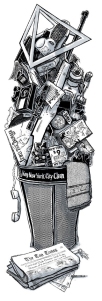
To me, that is a problem. Coming from not just the East Coast but Florida – East Coasters don’t even consider Florida the East Coast even though it is! [Laughs]. Having that underdog approach… Somebody said to me the other day: “Theories brands kind of are the establishment now.” I was like: “Don’t ever say that to me,” but also if that happened I feel like that would be a bad thing because I consider that if somebody identifies with us it is because we are small. Four of us in the back of my apartment, that’s what Theories is really and Polar – Pontus is just doing everything. He’s filming and editing the video, doing the graphics, apparel production and designing everything.
I’ve been to all those other companies, working in different capacities, and been to their offices where they have a design department, accounting department and this huge infrastructure. I hope we don’t ever become considered that even though that sounds silly because you would be more financially successful. I would rather cater to the underground or indie vibe because that is what got us to where we are now. Or for me, making skate videos based around much ignored talent not just on the East Coast but all around the world. It’s a weird thing to think about so who knows but it is crazy seeing how much has been crumbling and losing support. I just don’t know if a ‘big brand’ is what I want to be just as long as we have enough support that it is able to continue functioning and existing.
“I consider that if somebody identifies with us it is because we are small. Four of us in the back of my apartment, that’s what Theories is.”
Condensed edition originally published 8th December 2015 on Keen Distribution’s blog.
Interview by Farran Golding.





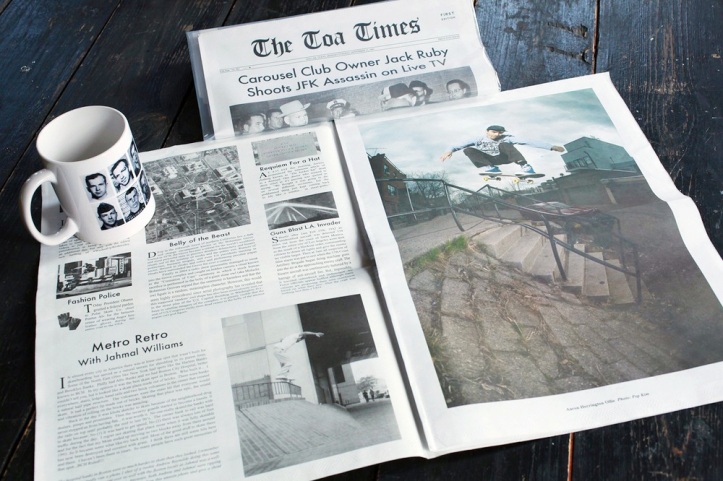

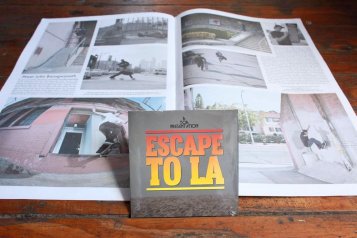

2 thoughts on “Josh Stewart talks Life After ‘Static IV’ & Theories of Atlantis”